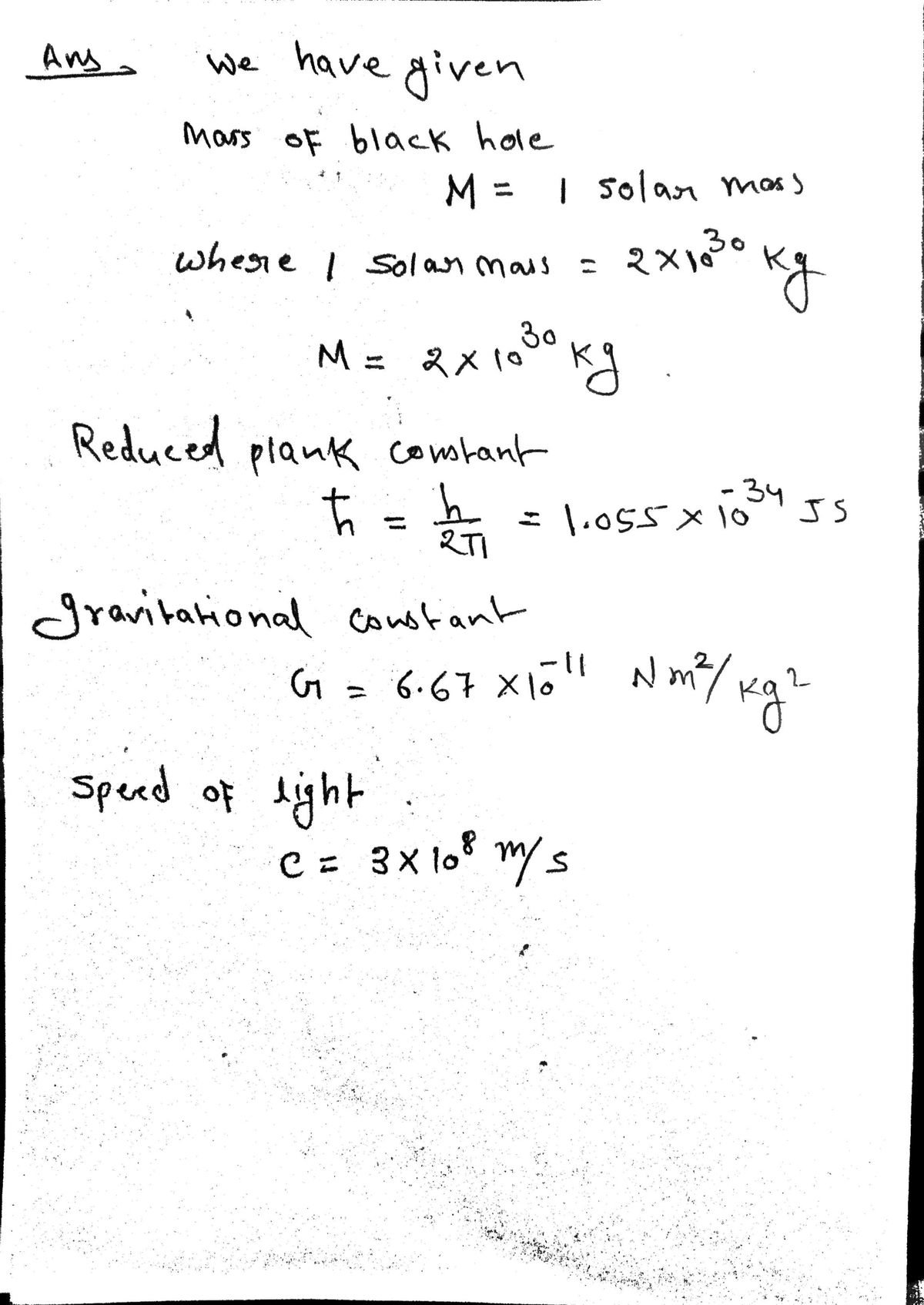Calculate the time required for a 1 solar mass blackhoe to completely radiate its energy.
Calculate the time required for a 1 solar mass blackhoe to completely radiate its energy.
Related questions
Question

Transcribed Image Text:**Problem Statement:**
Calculate the time required for a 1 solar mass black hole to completely radiate its energy.
**Explanation:**
This question involves understanding the concept of Hawking radiation, a theoretical prediction that black holes emit radiation and gradually lose mass and energy over time. This gradual loss of mass leads to the eventual evaporation of the black hole.
For a 1 solar mass (approximately \(2 \times 10^{30}\) kg) black hole, the time taken to fully evaporate via Hawking radiation can be estimated from Stephen Hawking's formula for black hole evaporation. The formula involves complex physics, but the key takeaway is that massive black holes take extraordinarily long timescales to fully evaporate.
**Note:** This theoretical calculation assumes that the black hole is isolated and not gaining mass by other means. The actual observational evidence of Hawking radiation is still a topic of ongoing research.
Expert Solution
Step 1

Step by step
Solved in 2 steps with 2 images
